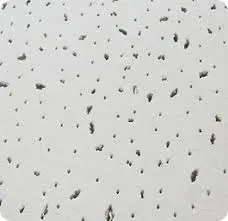8 月 . 12, 2024 19:42 Back to list
Ceiling Suspension Wire Solutions for Securely Hanging Grid Systems and Light Fixtures in Your Space
Understanding Ceiling Grid Hanger Wire Essential for Suspended Ceilings
When it comes to modern construction and interior design, suspended ceilings have become increasingly popular. These ceilings provide not only aesthetic benefits but also functional advantages, such as improved acoustics and easy access to plumbing and electrical systems. Key to the successful installation of a suspended ceiling is the use of ceiling grid hanger wire, a crucial component that ensures stability and durability.
What is Ceiling Grid Hanger Wire?
Ceiling grid hanger wire is designed to support the weight of the ceiling grid system, which is typically composed of metal channels and tiles. This wire is usually made of strong, durable materials such as steel, ensuring it can hold significant weight without bending or breaking. The wire is often coated to resist rust and corrosion, enhancing its longevity and reliability in various environments, from commercial buildings to residential spaces.
Installation Process
The installation of ceiling grid hanger wire is a critical step in creating a suspended ceiling. The process typically begins with marking the ceiling layout based on the dimensions of the room. Once the layout is established, the installer will anchor the wire to the structural ceiling above. This is usually achieved using special fasteners or hooks that create a secure attachment point. The next step involves adjusting the length of the hanger wire to ensure that the grid system is level.
The installer then attaches the grid runners to the hanger wire, forming a framework that will support the ceiling tiles. It's important that the grid is properly aligned and secured to prevent sagging or unevenness in the ceiling. This can be time-consuming, but proper attention to detail during this phase will pay off in the long run, ensuring a visually appealing and functional ceiling.
ceiling grid hanger wire

Benefits of Using Ceiling Grid Hanger Wire
1. Stability and Strength The primary function of ceiling grid hanger wire is to provide robust support for the suspended ceiling. This strength helps prevent accidents and maintains the integrity of the ceiling over time.
2. Flexibility in Design Hanger wires come in various lengths, allowing flexibility in the design and installation of the ceiling grid. This adaptability means that installers can accommodate varying ceiling heights and room configurations, creating a customized look for any space.
3. Ease of Access Suspended ceilings facilitate easier access to plumbing, electrical systems, and HVAC components. Ceiling grid hanger wires provide the necessary support without obstructing maintenance or repairs, making it simpler to resolve any issues that may arise.
4. Acoustic Considerations The installation of a suspended ceiling often includes acoustic tiles. By using properly secured hanger wire, the sound absorption qualities of the ceiling are enhanced, making spaces quieter and more comfortable.
Conclusion
Ceiling grid hanger wire is an indispensable element in the construction of suspended ceilings. Its strength, flexibility, and ease of installation contribute significantly to the overall design and functionality of the space. As trends in architecture and interior design continue to evolve, the importance of stable, durable ceiling support systems remains paramount. Whether you are a contractor, an architect, or a DIY enthusiast, understanding the intricacies of ceiling grid hanger wire can help ensure a successful, long-lasting suspended ceiling installation. By paying attention to the details and prioritizing quality materials, you can create a visually appealing and practical ceiling that meets the needs of any environment.
-
Revolutionizing Interior Design with Ceilings t grid Suspended SystemNewsOct.29,2024
-
Revolutionizing Ceiling Design with ceiling access panel with Gypsum Tile WaterproofNewsOct.29,2024
-
Revolutionizing Interior Design with PVC Gypsum Ceiling: A Comprehensive GuideNewsOct.29,2024
-
Elevating Interior Design with High quality Mineral Fiber Ceiling TilesNewsOct.29,2024
-
Revolutionizing Interior Design with PVC Gypsum Ceiling: A Comprehensive GuideNewsOct.29,2024
-
Elevating Interior Design with High-Quality Mineral Fiber Ceiling Tiles: A Comprehensive GuideNewsOct.29,2024







